One solution, as you mentioned, is to one-hot encode the categorical data (or even use them as they are, in index-based format) and feed them along the numerical data to an LSTM layer. Of course, you can also have two LSTM layers here, one for processing the numerical data and another for processing categorical data (in one-hot encoded format or index-based format) and then merge their outputs.
Another solution is to have one separate embedding layer for each of those categorical data. Each embedding layer may have its own embedding dimension (and as suggested above, you may have more than one LSTM layer for processing numerical and categorical features separately):
num_cats = 3 # number of categorical features
n_steps = 100 # number of timesteps in each sample
n_numerical_feats = 10 # number of numerical features in each sample
cat_size = [1000, 500, 100] # number of categories in each categorical feature
cat_embd_dim = [50, 10, 100] # embedding dimension for each categorical feature
numerical_input = Input(shape=(n_steps, n_numerical_feats), name='numeric_input')
cat_inputs = []
for i in range(num_cats):
cat_inputs.append(Input(shape=(n_steps,1), name='cat' + str(i+1) + '_input'))
cat_embedded = []
for i in range(num_cats):
embed = TimeDistributed(Embedding(cat_size[i], cat_embd_dim[i]))(cat_inputs[i])
cat_embedded.append(embed)
cat_merged = concatenate(cat_embedded)
cat_merged = Reshape((n_steps, -1))(cat_merged)
merged = concatenate([numerical_input, cat_merged])
lstm_out = LSTM(64)(merged)
model = Model([numerical_input] + cat_inputs, lstm_out)
model.summary()
Here is the model summary:
Layer (type) Output Shape Param # Connected to
==================================================================================================
cat1_input (InputLayer) (None, 100, 1) 0
__________________________________________________________________________________________________
cat2_input (InputLayer) (None, 100, 1) 0
__________________________________________________________________________________________________
cat3_input (InputLayer) (None, 100, 1) 0
__________________________________________________________________________________________________
time_distributed_1 (TimeDistrib (None, 100, 1, 50) 50000 cat1_input[0][0]
__________________________________________________________________________________________________
time_distributed_2 (TimeDistrib (None, 100, 1, 10) 5000 cat2_input[0][0]
__________________________________________________________________________________________________
time_distributed_3 (TimeDistrib (None, 100, 1, 100) 10000 cat3_input[0][0]
__________________________________________________________________________________________________
concatenate_1 (Concatenate) (None, 100, 1, 160) 0 time_distributed_1[0][0]
time_distributed_2[0][0]
time_distributed_3[0][0]
__________________________________________________________________________________________________
numeric_input (InputLayer) (None, 100, 10) 0
__________________________________________________________________________________________________
reshape_1 (Reshape) (None, 100, 160) 0 concatenate_1[0][0]
__________________________________________________________________________________________________
concatenate_2 (Concatenate) (None, 100, 170) 0 numeric_input[0][0]
reshape_1[0][0]
__________________________________________________________________________________________________
lstm_1 (LSTM) (None, 64) 60160 concatenate_2[0][0]
==================================================================================================
Total params: 125,160
Trainable params: 125,160
Non-trainable params: 0
__________________________________________________________________________________________________
Yet there is another solution which you can try: just have one embedding layer for all the categorical features. It involves some preprocessing though: you need to re-index all the categories to make them distinct from each other. For example, the categories in first categorical feature would be numbered from 1 to size_first_cat and then the categories in the second categorical feature would be numbered from size_first_cat + 1 to size_first_cat + size_second_cat and so on. However, in this solution all the categorical features would have the same embedding dimension since we are using only one embedding layer.
Update: Now that I think about it, you can also reshape the categorical features in data preprocessing stage or even in the model to get rid of TimeDistributed layers and the Reshape layer (and this may increase the training speed as well):
numerical_input = Input(shape=(n_steps, n_numerical_feats), name='numeric_input')
cat_inputs = []
for i in range(num_cats):
cat_inputs.append(Input(shape=(n_steps,), name='cat' + str(i+1) + '_input'))
cat_embedded = []
for i in range(num_cats):
embed = Embedding(cat_size[i], cat_embd_dim[i])(cat_inputs[i])
cat_embedded.append(embed)
cat_merged = concatenate(cat_embedded)
merged = concatenate([numerical_input, cat_merged])
lstm_out = LSTM(64)(merged)
model = Model([numerical_input] + cat_inputs, lstm_out)
As for fitting the model, you need to feed each input layer separately with its own corresponding numpy array, for example:
X_tr_numerical = X_train[:,:,:n_numerical_feats]
# extract categorical features: you can use a for loop to this as well.
# note that we reshape categorical features to make them consistent with the updated solution
X_tr_cat1 = X_train[:,:,cat1_idx].reshape(-1, n_steps)
X_tr_cat2 = X_train[:,:,cat2_idx].reshape(-1, n_steps)
X_tr_cat3 = X_train[:,:,cat3_idx].reshape(-1, n_steps)
# don't forget to compile the model ...
# fit the model
model.fit([X_tr_numerical, X_tr_cat1, X_tr_cat2, X_tr_cat3], y_train, ...)
# or you can use input layer names instead
model.fit({'numeric_input': X_tr_numerical,
'cat1_input': X_tr_cat1,
'cat2_input': X_tr_cat2,
'cat3_input': X_tr_cat3}, y_train, ...)
If you would like to use fit_generator() there is no difference:
# if you are using a generator
def my_generator(...):
# prep the data ...
yield [batch_tr_numerical, batch_tr_cat1, batch_tr_cat2, batch_tr_cat3], batch_tr_y
# or use the names
yield {'numeric_input': batch_tr_numerical,
'cat1_input': batch_tr_cat1,
'cat2_input': batch_tr_cat2,
'cat3_input': batch_tr_cat3}, batch_tr_y
model.fit_generator(my_generator(...), ...)
# or if you are subclassing Sequence class
class MySequnece(Sequence):
def __init__(self, x_set, y_set, batch_size):
# initialize the data
def __getitem__(self, idx):
# fetch data for the given batch index (i.e. idx)
# same as the generator above but use `return` instead of `yield`
model.fit_generator(MySequence(...), ...)

